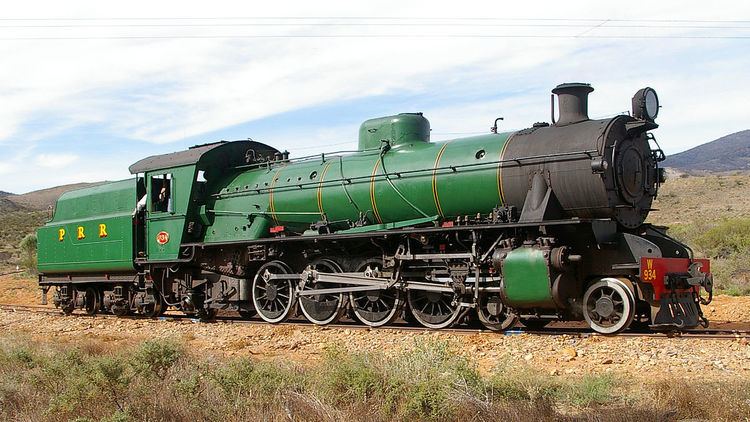Power type Steam Serial number 7378-7417, 7453-7472 Total produced 60 | Build date 1951–1952 | |
 | ||
Designer Frederick Mills, Charles Clarke & Beyer, Peacock & Co | ||
The WAGR W class was a class of 4-8-2 steam locomotives operated by the Western Australian Government Railways (WAGR) between 1951 and 1972.
Contents
Engineering Background
The class was first proposed by Chief Mechanical Engineer Frederick Mills in 1947. However, the death of Mills in 1949 put a hold on the project, with his successor Charles Clarke, taking up the project on his appointment later that year.
Mills had requested Beyer, Peacock & Co to reserve capacity for their construction when the design was first proposed, however, by the time Clarke took over, Beyer, Peacock & Co had identified a number of possible problems with the design. This led to a meeting in the United Kingdom in 1950, the outcome of which was a substantial redesign of the locomotive.
The resultant locomotive included many proprietary boiler and ancillary fittings, as well as parts interchange ability. The firebox was substantially altered to take into account the properties of Collie coal. This included a combustion chamber, thermic syphons and arch bar tubes.
The running gear was based heavily on Beyer, Peacock & Co's Standard Light Garratt, which was built for the South Australian Railways as its 400 class. The first 40 were delivered partially erected, whilst the final 20 were fully assembled prior to shipping. The last 20 had larger tenders, capable of holding an additional 2,500 litres (550 imp gal; 660 US gal). All were delivered between April 1951 and June 1952.
Operational history
The light axle load of the W class, 9.5t, gave it availability across the entire WAGR Network. Although essentially a freight engine, the W class regularly hauled The Australind from Perth to Bunbury. It effectively replaced the aged O and G classes still working on lighter parts of the network.
The class had a reputation for being free steamers and strong pullers. Although they have a well-deserved reputation for their reliability, like any new class the W locos suffered some minor teething problems, including ashpan failures, and leaks in and around the foundation ring. The leaks were traced to faulty welding. The class suffered from stay failures in its early days, particularly in and around the throat plate. The first to fail was W913 in 1952. At one point, no less than 34 of the class were in Midland Railway Workshops or regional depots for stay repair. The problem was traced back to the thermic syphons creating significant water movement in the area, overstressing the boiler plates, as well as problems with the quality of the original stays. The syphons were progressively removed over a seven-year period, eliminating the problem.
Following the modification, the last of which was made in 1959, the class gave excellent service. As dieselisation of WAGR continued, the class was gradually moved to the southern parts of the network. Withdrawals commenced in 1968 with the last condemned in 1972. Most of the class was scrapped in 1971, although 19 were held in reserve at Midland Railway Workshops until 1972. The last few remained at Midland until 1980.
Sister Locomotives
Beyer, Peacock & Co built four additional engines to the same design for the Silverton Tramway Company as their W class.
Preservation
The light axle load of the W class along with their relative youth resulted in them being sought after by tourist operators, both in Western Australia and interstate with 18 preserved. Today they form the backbone of the Hotham Valley Railway and Pichi Richi Railway fleets with each having three operational examples. Until 2006, Hotham Valley Railway's Ws operated services on the Brookfield Rail network, but today they are confined to its own heritage line.
